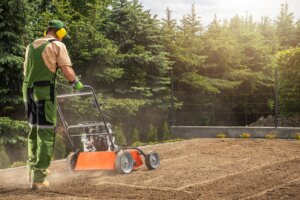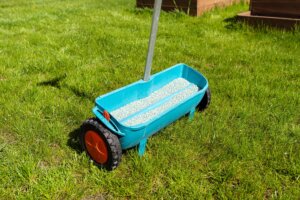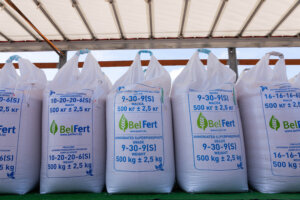Yes — fall is the best time to aerate your lawn, especially if you have cool-season grasses like Kentucky bluegrass, fescue, or ryegrass. Cooler soil temperatures, active root growth, and fewer weed seeds make autumn the perfect season to relieve compaction, improve drainage, and prepare your lawn’s root system for winter. Aim for late summer to mid-fall while grass is still growing, and use core aeration for the best results.
Why Fall Aeration Beats Spring
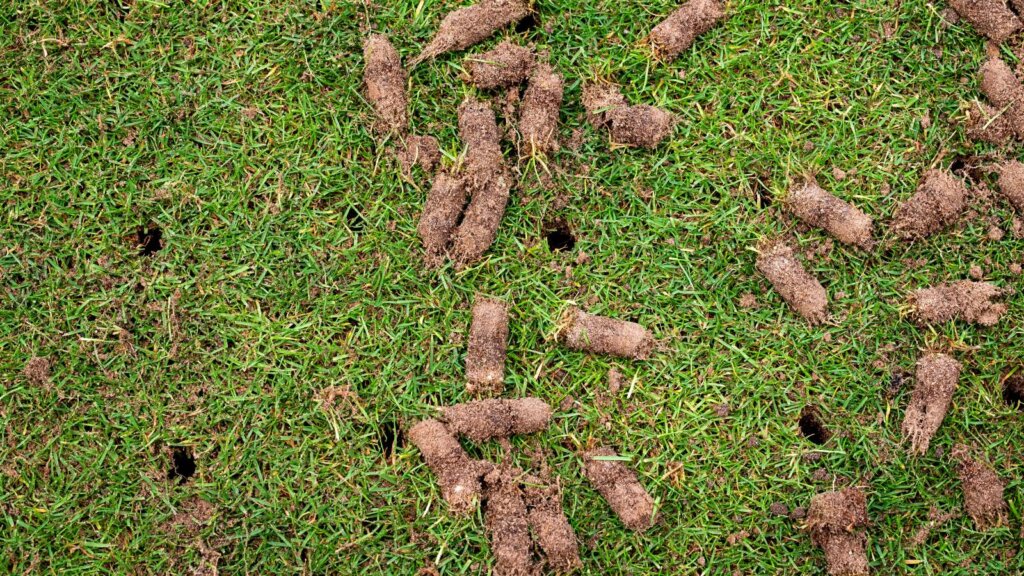
Fall lines up perfectly with the growing season for cool-season grasses. During this time, grass plants naturally put more energy into root growth, which means they recover faster from the small holes created during aeration. You also avoid the heavy weed growth that often happens in early summer, giving your lawn a cleaner, healthier start.
Key reasons to choose fall aeration:
- Roots grow most actively in fall, allowing for faster recovery.
- Weed growth is reduced compared to spring aeration.
- Soil moisture is typically ideal for aeration equipment.
- Cooler weather reduces stress on healthy grass.
- Strengthens the lawn’s root system before winter hits.
By tackling compacted soil now, you give roots a head start before cold weather sets in — a key step for a truly healthy lawn next year.
How Aeration Creates a Healthy Lawn
Healthy grass starts with healthy soil. When soil is compacted, even by as little as one inch, roots can’t absorb enough water, air, or nutrients. Research from the University of Maryland shows that even a half-inch of compaction can restrict water infiltration and oxygen flow, leading to thin turf, weeds, and brown spots.
Core aeration pulls small plugs from the ground, breaking up thatch and improving drainage so fertilizer works more effectively. It also makes your lawn more water-efficient — Oregon State University research shows it can cut water use by 20–30%.
If you plan to overseed, aeration ensures direct soil contact for new grass seeds — creating the perfect environment for germination and year-round density.
Signs Your Lawn Needs Aeration This Fall
- Brown spots or thin patches that don’t improve with watering
- Water running off instead of soaking in after rain
- Heavy foot traffic areas where the soil feels hard
- Thick thatch build-up making your lawn spongy underfoot
The Best Way to Aerate: Core Aeration Over Spikes
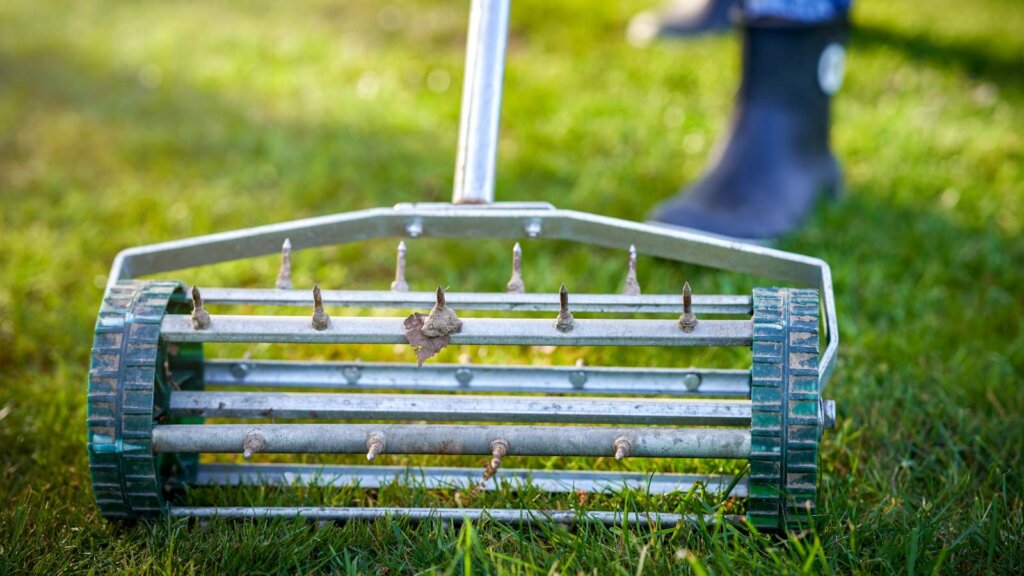
The most effective method is core aeration, which removes small plugs of soil 2–4 inches deep and leaves them on the surface to naturally break down. Spike aeration, on the other hand, pushes the soil sideways and can make compaction worse. “Liquid aeration” products may sound convenient, but research from the University of Nebraska confirms they don’t relieve compacted soil.
Lawn care experts recommend making two passes over the lawn in different directions to ensure even coverage. This is especially important for areas with heavy foot traffic, where compaction tends to be worst.
Best Time to Aerate for a Beautiful Lawn
In Pennsylvania, the best time to aerate cool-season grasses is late August through mid-October. This gives your lawn four to six weeks to recover before winter hits. Aerating in the fall also ensures that the new root growth happens during the ideal weather conditions for cool-season turf.
Quick Reference: Ideal Fall Aeration Timing and Tips
| Factor | Recommendation | Why It Matters |
|---|---|---|
| Best months in PA | Late August – Mid-October | Matches cool-season grass growth and recovery cycle |
| Soil moisture level | Moist, not soggy or dry | Ensures proper tine penetration |
| Time of day | Morning or late afternoon | Cooler temps reduce stress on grass |
| Overseeding timing | Immediately after aeration | Maximizes seed-to-soil contact |
| Recovery time before frost | At least 4 weeks | Allows roots to strengthen before winter |
Aftercare: Turning Aeration Into Lasting Results
Once you’ve aerated, leave the plugs on the ground — they’ll naturally break down, adding nutrients back into your soil.
Steps for effective aftercare:
- Overseed immediately so seeds have direct soil contact.
- Apply fertilizer to provide essential nutrients for root development.
- Water consistently for the first few weeks to keep soil moist.
- Avoid heavy use of the yard until the new grass is established.
With proper aftercare, you’ll have healthy grass that can handle pests, weather swings, and heavy use without thinning out.
DIY or Hire a Pro?
Some lawn owners handle aeration themselves, especially for small yards. But if you’re dealing with heavy clay soil, stubborn weed growth, or large areas, professional help makes a big difference.
DIY vs Professional Aeration: Which is Right for You?
| Factor | DIY Aeration | Professional Aeration |
|---|---|---|
| Equipment | Rental core aerator from a hardware store | Commercial-grade machines with deeper penetration |
| Cost | Lower upfront, but equipment rental fees apply | Higher cost, but includes labor and expertise |
| Skill required | Must learn proper technique | Performed by trained lawn care experts |
| Time & Effort | Can be physically demanding | Completed quickly and efficiently |
| Best for | Small, lightly compacted lawns | Large areas, heavy compaction, or high-value turf |
At Terra Lawn Care Specialists, our lawn care experts use professional equipment and tailor the process to your soil type, grass variety, and seasonal needs. If you prefer a natural approach, our organic lawn care services are safe for kids, pets, and pollinators.
Ready to Give Your Lawn a Fresh Start This Fall?
Don’t wait until the weather turns cold. Aerating now gives your lawn’s root system the oxygen, nutrients, and moisture it needs to thrive all year round. Contact us today to schedule your fall aeration with Terra Lawn Care Specialists — the local team that treats your property as if it were our own.

